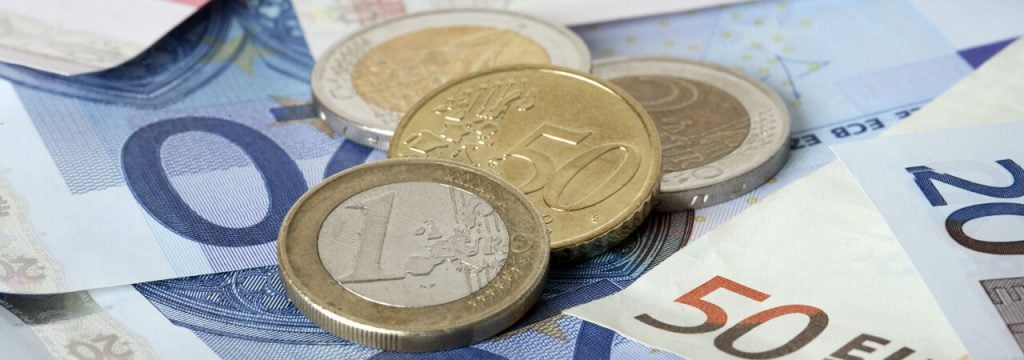Filter insights on this page
Repo rates are expressed relative to SONIA, and the chart below displays the average repo rates that we have achieved over the past four quarters for three, six, nine and 12-month repos, shown as a spread to average SONIA levels at the time. The volatility and market uncertainty that resulted from the mini-Budget also weighed upon funding markets, particularly for shorter dated trades as can be seen from the achieved spreads below. Note that during the fourth quarter of 2022 no repos were traded with a 12m tenor so the chart reflects the previous quarter’s value.
Capabilities
Media type
Themes
Figure 2: Change in swap rates over the next quarter
The secondary impact of the mini-Budget crisis centred around collateral and the velocity of movement; rather than a lack of balance sheet for repo funding (a la March 2020). Yet, the difficulties around collateral substitutions and settlements did in many cases prompt a review by individual banks’ credit officers, resulting in a temporary reduction or hiatus in repo balance sheet provision in some cases. Once these reviews were completed balance sheet availability opened up again – some with the addition of haircuts to provide additional protection to the bank. Of course, the momentous lack of certainty in the future path of interest rates also impacted the typical repo spread to SONIA as trading a fixed rate forced the banks to take a conservative view on where yields could reach.
The funding ratio index published by the Pension Protection Fund showed a slight decrease in funding levels quarter-on-quarter (124.7% at end March vs 125.7% at end December). Higher yields benefitted the liability side of the equation, however the dramatic fall in equities weighed upon funding ratios. High hedging levels mean that schemes saw only a modest gain from the higher yields but still retain some exposure to equities.
Market Outlook
Source: Columbia Threadneedle Investments. As at 31 March 2025
Inflation hedging rose by 12% quarter on quarter, whilst interest rate hedging activity increased by 27% from the previous quarter.
All data and sources Columbia Threadneedle Management Limited, as at 30 June 2024 and Valid to: 30 September 2024
Regions

President Trump’s ‘Liberation Day’ antics dominated the quarter as markets struggled to digest the volatile news-flow. Whilst tariffs have come and gone, risen and fallen; the one aspect that most agree upon is that the uncertainty will weigh upon growth as companies pause investment and hiring decisions as they await clarity. Europe has benefitted from US discomfort as investors seek alternative assets.
The initial market response to the larger than anticipated tariffs were a sharp drop in equities and an increase in government yields (fall in prices). The lack of diversification between equities and fixed income was highly unusual in the US which has benefitted from hyper-exceptionalism as the world’s reserve currency and also the government bond safe haven of choice.
Many investors and indeed central banks had held an overweight position in the US, post Liberation Day the trend was to reduce risk and exposure to the US and Europe was the main beneficiary. Europe is the second largest reserve currency (albeit some way behind the US) and also maintains a substantial bond market, enhanced by common Euro debt, making it a real contender for liquidity and access. President Trump’s attitude to Ukraine and the costs of defence did not make for easy watching, but did score a victory as European nations committed to increasing their defence spending, some on an individual level and also through the new EUR150bn European wide Security Action for Europe (SAFE) issuance. The German government released its debt brake, paving the way for further investment in infrastructure as well as defence, marking a turning point for German issuance.
Despite the future expansion in supply, the demand picture as investors rotated away from the US allowed German government bonds to become more expensive versus swaps. On the other hand, French woes continued as the split Parliament struggled to rein in the deficit, indeed the additional commitments on defence will worsen their position. Belgium was downgraded by Fitch, putting further pressure on France.
In the Netherlands there was a proposal to alter the structure of pensions reform, granting members the right to choose between a defined benefit or defined contribution scheme. Ultimately after much delay the Dutch Parliament rejected the amendment, such that no delay is currently expected to the implementation of pension reform. The scale of Dutch pension schemes in the long end of the Euro swap market is substantial, and with this activity the one constant amidst all the tariff uncertainty it has received much focus. The base supposition is that pension schemes will require less long dated hedging (although they may require more at lower tenors). Given liabilities stretch out for many years existing hedging has been concentrated in the swap market, particularly as there is limited availability of high-quality government bonds in the longer maturities. However, the scale of hedge reduction depends on the starting position; the timing is also important as schemes have a number of dates to choose from to implement the new pensions mandate. There are some enormous numbers discussed across the market, and as such the view is that the curve will steepen (i.e. yields at longer maturities will rise relative to shorter maturities). This is a very popular position to hold for hedge funds with some suggesting that the volume of positioning could be EUR100m PV01. However, the key will be not just how much is traded but when.
For most of the quarter, President Trump’s rhetoric was firmly against Europe, threatening high tariffs, however recently these have diminished as it appears that Europe is close to finalising a trade deal with the USA. Inflation is typically less prevalent in the Eurozone and as such the European Central Bank were able to continue their rapid monetary easing, reducing the Deposit Facility Rate to 2% from 2.5% at the start of the quarter. Now it seems that the ECB is in wait and see mode, with future rate cuts more in the balance.
Market Outlook
We also asked investment bank derivatives trading desks for their opinions on the likely direction of key rates for liability hedging. The aim is to get information from those closest to the market to aid investors in their decision-making.
The results are shown below as the number of those predicting a rise less those predicting a fall, as a percentage of the number of responses. The larger the balance, the more responses predict a rise. The more negative the balance, the more responses predict a fall.
Chart 1: Change in swap rates over the next quarter.
Source: Columbia Threadneedle Investments. As at 30 June 2025
Last quarter our counterparties had low conviction on the outcome for any of the key rates, although tilted towards a decrease. However, the impact of higher yields in the US and curve steepening fed through to European markets.
Looking forwards there is a strong expectation that 30-year nominal yields will rise. This is part of the aforementioned expectation of curve steepening driven by Dutch pension reform exacerbated by global pressures, with the US and Japan fiscal situation incurring more risk premium. In addition, the growth in supply could put upward pressure on yields. The extent of German fiscal expansion could also lead to reflationary factors.
With so much uncertainty over the eventual tariff level for Europe we asked our counterparties what their view of the potential impacts could be. Their core view is that the influence of tariffs is likely to be long-lasting, with de-dollarisation gradually shifting demand to Europe over the medium to long- term. The strength of the Euro versus the US Dollar results in a monetary tightening effect, one that may weigh upon growth, requiring further ECB cuts to support the economy. The appreciation of the Euro is also deflationary as is the potential for China to reroute cheap goods to Europe from the US which will allow the ECB room to ease further. Yet on the other hand, the German proposals to expand infrastructure investment could add inflationary pressure. Fitch is due to review their rating of France in September and our counterparties suspect that this may result in a downgrade. (All three ratings agencies have negative outlooks on France). When France’s fiscal characteristics are compared to Belgium they score worse on many counts such as deficit levels, projected defence spending increases and political risk. On the upside, Spain is much improved, and has reduced its primary deficit, and thus could see a ratings upgrade in the near future.
If you would like to learn more about any of the topics discussed, please contact your usual client representative.




